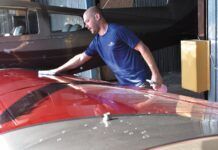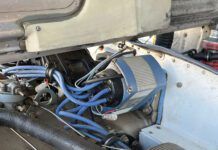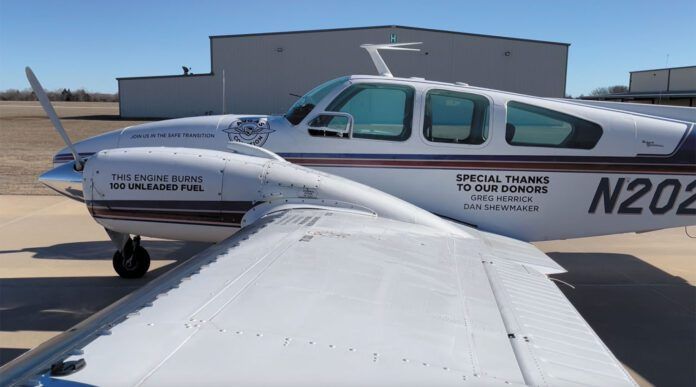
It was no big deal.
We flew the AOPA Baron that is running 100LL through the right engine and General Aviation Modification Inc.’s (GAMI’s) (www.gami.com) FAA-certified G100UL avgas through the left engine for over three hours and came away from it going ho-hum.
There weren’t any special procedures required to operate the engine running G100UL. We didn’t have to check the phase of the moon before starting the engine, no modification to the engine was required to accept and burn the fuel safely and we didn’t have to have any special training before lighting off and running it. Ho-hum, no big deal.
Actually, it is a very big deal.
In our opinion, it’s one of the biggest in recent aviation history. When we consider how long people have been trying to come up with a high-octane, unleaded aviation fuel to replace leaded avgas—at least 40 years—all of the failures, the false starts, the special committees formed and failed and the time it took to obtain FAA approval once GAMI came up with G100UL, reaching the goal of making the experience of using the fuel a ho-hum event is a very big deal.
During our visit to GAMI, we made a series of flights in the Beech Baron C55 that AOPA set up to demonstrate the use of G100UL in real-world service. We put a total of 3.3 hours on the twin. We flew typical GA cross-countries, made takeoffs and landings, hot starts and cold starts and we shut down and feathered the prop on the right engine. We then flew around about 100 miles on the engine fed with G100UL. On a warmer-than-standard day at 4,500 feet, about 200 pounds below gross and carrying 75 percent power on the good engine we were able to climb at over 200 FPM.
What we did observe when we set the engines up for cruise at 20 to 25 degrees lean of peak EGT (LOP), so that they were making the same power, was that the G100UL engine burned about 0.8 GPH less than the engine burning 100LL. That is consistent with the fact that typical G100UL has about 2 to 3 percent more energy per gallon than typical 100LL.
When we burn fuel in our airplanes, what we are really doing is putting BTUs (British Thermal Units, a measure of the heat content of fuels or an energy source) into the engine. As examples, a recent 100LL lab test showed 112,530 BTUs per gallon. A recent G100UL lab test measured 115,950 BTUs per gallon—about a 3 percent difference.
We also experimented with running G100UL or 100LL through both engines at the same time. With the same fuel flow, the airplane was about 2 to 2.5 knots faster using G100UL. That’s consistent with the energy difference in the fuels. We’ll talk more about the details of G100UL below.
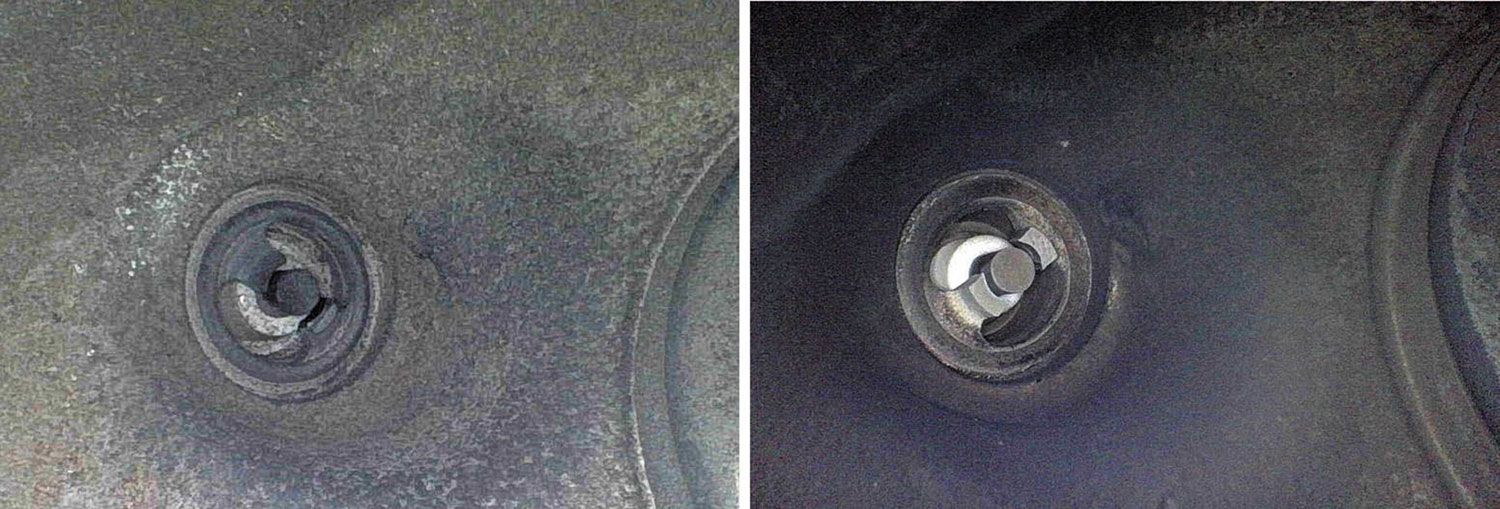
How We Got Here
Let’s take a step back for a thumbnail sketch of how we got where we are. In the 1920s tetraethyl lead (TEL) was added to gasoline to increase its octane rating (a function of pressure and temperature at which the fuel will spontaneously combust in an engine) and allow engines to develop more horsepower without detonating. Detonating is the explosion, rather than burning, of the fuel/air charge in the engine cylinder, causing excessive pressure spikes within the cylinder—which can destroy the engine.
With lead to boost the octane rating of gasoline, aircraft engines were able to develop unprecedented power. In the general aviation world leaded avgas has been essential to enable the power output of the big-bore Continentals and Lycomings that propel high-performance singles and twins.
There’s a problem with using lead—it’s toxic. In fact, there is no minimum exposure level that is considered safe. It is especially nasty to children, causing impaired brain development, decreased intelligence and behavioral disorders. None of the effects can be reversed. Lead is stored in the bones so it is very slow to leave the body.
Scientists learned early that lead in gasoline was an ugly compromise to get engine power. The search for alternatives began almost immediately. Unleaded automobile fuel was introduced in the 1970s.
Aviation fuel was a tougher problem as the octane ratings required were higher than auto fuel and the demands of their operating environment make it difficult to modify the engines for lower octane fuels. In the late 1970s 100/130 octane avgas was replaced by 100LL, which contained less lead, but still much more than 80/87 octane fuel.
Beginning in the 1980s, efforts to create a high-octane unleaded avgas went from one dead end to another until GAMI developed its G100UL (filing its first patent in 2009). After more than 10 years of intensive certification testing for the FAA, on September 1, 2022, it was approved by the FAA as a fleet-wide, drop-in replacement for 100LL. It was demonstrated to be fully compatible with 100LL (you can mix them in your fuel tank and the storage tank at the airport). It is now approved for every existing spark-ignition piston engine and every associated airplane found anywhere in the FAA and airplane databases without any modification to the engines or aircraft (other than affixing routine placards).
GAMI certified G100UL through the FAA’s STC program for new fuels. When it comes to STC certification, the bottom line is similar to how a doctor is to behave: First of all, do no harm. GAMI had to demonstrate that G100UL was as good as, or better, than 100LL in all of the parameters involved in aircraft engine operation.
The result is a fuel that typically contains about 2 to 3 percent more heat energy than 100LL. It also has a slightly better detonation margin at the low end and considerably better margin at the upper end.
Avgas historically is defined by two numbers. 100LL is a derivative of the earlier 100/130 avgas. Historically we’ve also had 80/87, 91/96 and 115/145 octane avgas. Simplified a bit, the first number is the Motor Octane Number, which defines the detonation margin with a basic lean mixture. The second number is called the performance number or the supercharge number, the octane rating defining the detonation margin at a full-power, full-rich mixture.
Finding the supercharge number (again, simplified) involves putting the fuel into a specially designed supercharged laboratory test engine and progressively increasing the boost until the engine begins to detonate. 100LL’s supercharge number is 130.
We were provided with two reports generated by the FAA on its supercharge number testing of G100UL. The FAA mixed the fuel itself using the approved spec. It was put in the test engine and run up. The test configuration replicated and exceeded the internal cylinder pressures found in our most demanding turbosupercharged engines. The engine “ran out of supercharger” before any detonation was detected. From our review of the data, it appears to us that if G100UL were to be classified in the same manner as avgas used to be, its supercharge number would be something above 150, making it 100/150 or above.
Benefits
In addition to getting the getting the lead out of avgas, G100UL means no lead deposits on valves and spark plugs. That means not having the cost of pulling and cleaning plugs as they get fouled with lead. From what we can tell it initially means doubling the time between oil changes, something Lycoming, for example, addresses in its Service Letter L270. It may also allow using synthetic oil.
Getting rid of lead also means longer engine life—as was discovered in the automotive industry decades ago.
In the midst of our Baron flights we sat in on a meeting between GAMI proprietor George Braly and Matt Jackson, longtime Reno unlimited race pilot and director of maintenance of the Commemorative Air Force (CAF). Jackson spoke of the desire for unleaded fuel because it will extend engine life, reduce or eliminate pulling and cleaning 36 spark plugs on a typical CAF radial engine and extend the time between oil changes.
Because of the performance octane level of G100UL, it appears the high-powered engines that were designed for no longer available 115/145 octane fuel, the purple stuff, and that are now run at reduced power on 100LL will be capable of returning to routine full-power operation if desired. That probably won’t be needed in normal operations except for commercial operations in such aircraft as DC-6s in Alaska that currently operate at reduced gross weights because of reduced manifold pressure setting with 100LL. However, the significant change may be an increased level of safety on multi-engine warbirds when one engine fails. Having full manifold pressure available means that power on the remaining engine(s) can be pushed up further than comfortable with 100LL. Having more power available on the remaining engine(s) seems to us to be a very good thing.
Cost
Braly told us that the cost of refined components that make up G100UL is currently in the range of $0.90 to $1.10 more than the cost of components used in 100LL. Any increase in price at the pump will be a result of actions by those in the production and distribution chain and, initially, the extra costs involved with making a fuel in relatively small quantities.
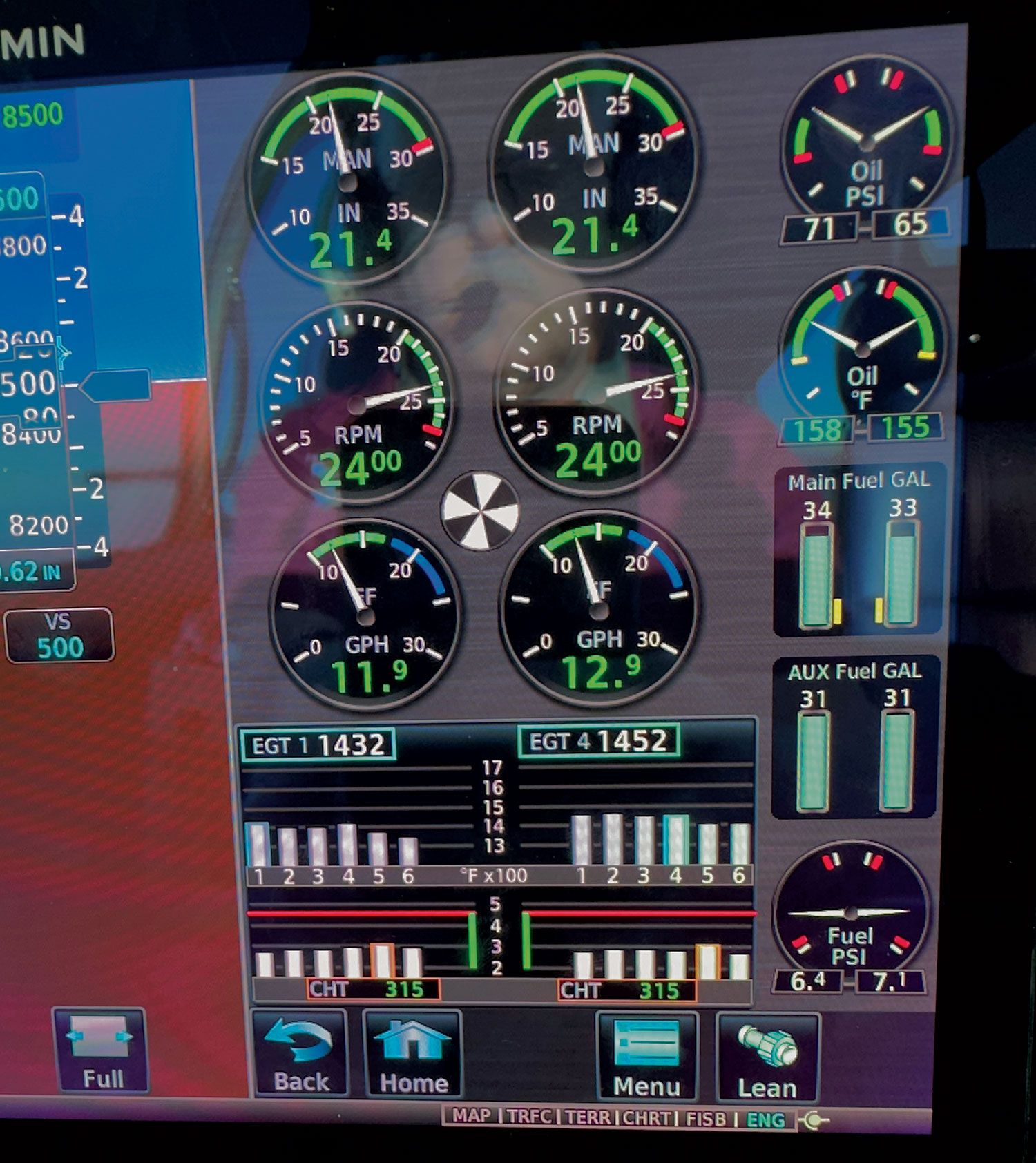
In the meeting with the CAF the potential for something going wrong as G100UL goes into widespread use was discussed. We’re cynical enough to recognize that despite the hard work of a lot of very smart people, something unexpected may happen.
We tend to forget that while we have virtually no problems with 100LL now, that wasn’t the case when it was introduced. Matt Jackson reminded us of the large number of Mooney and Piper fuel tanks that had to be resealed because 100LL attacked a chemical in the original sealant.
For over 10 years GAMI, under FAA supervision, has been testing components used in aircraft fuel systems. Something may go wrong, but it won’t be for lack of conscientious work to identify and test for potential problems in service.
G100UL weighs slightly more than 100LL, reflecting the difference in components in the basic fuel chemistry and the increase in heat energy in the fuel. We think of 100LL as weighing six pounds per gallon. The reality is that, depending on where it is produced, it weighs between 5.8 and 6.1 pounds per gallon. G100UL weighs between 6.15 and 6.36 pounds per gallon—typically around 6.25 pounds per gallon.
The weight difference ends up being a wash because pilots are buying BTUs to power their engines. The slightly heavier fuel load of full tanks of G100UL will take the airplane farther than a full load of 100LL.
We came away from our evaluation flights of the opinion that the real bottom line is that there is very little difference in performance between G100UL and 100LL—about 2 to 3 percent. In our opinion, that’s only noticeable with digital engine instrumentation. In use, we simply couldn’t tell the difference without the engine monitor. And that’s a very good thing, in our opinion. Our flights were ho-hum, and that’s how it should be with a new fuel.
Commercially Available
We were told that G100UL avgas should be available for rail car shipments in the first half of this year, making it “commercially available.” That phrase is of significance in California where the settlement of a lawsuit a few years ago obligates FBOs and fuel distributors to stop selling leaded avgas when unleaded avgas becomes commercially available. Because of that, we think that G100UL is going to be in FBO tanks in California first. However, we’re watching as more and more airports and state governments are applying pressure to ban leaded avgas, so the next year should be interesting.
Based on the routine nature of our flights and our review of test data, we think that the end of 100LL is not going to mean parking any aircraft for want of suitable fuel (especially as rotorcraft approval is pending).
We think that means that GAMI and G100UL will live up to the slogan we saw on a wall at GAMI: “Leave no engine on the ground.”
And, hey, AOPA, thank you for setting up the flight demonstration program in the Baron. It’s a big deal.


